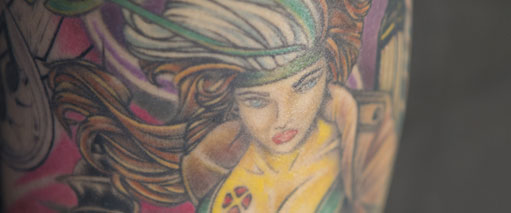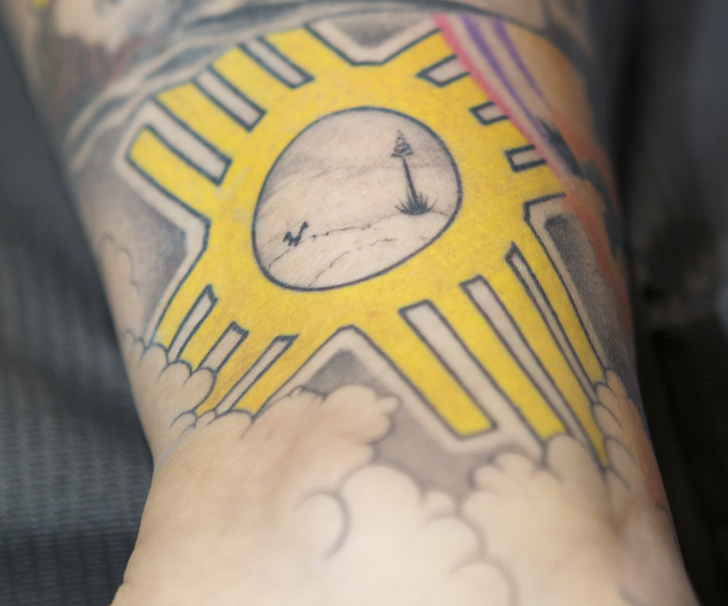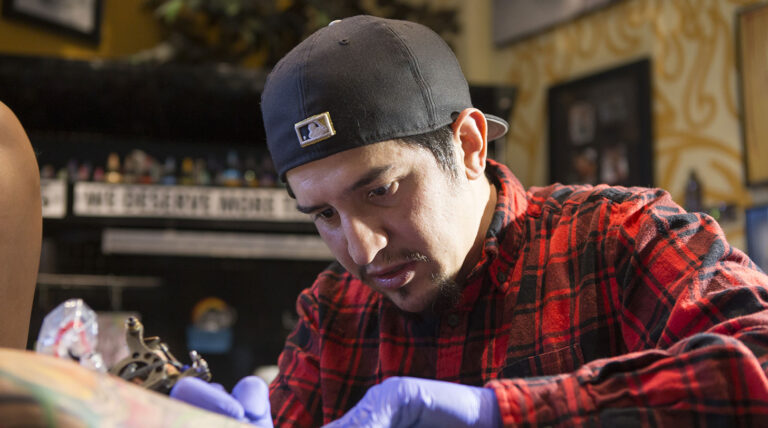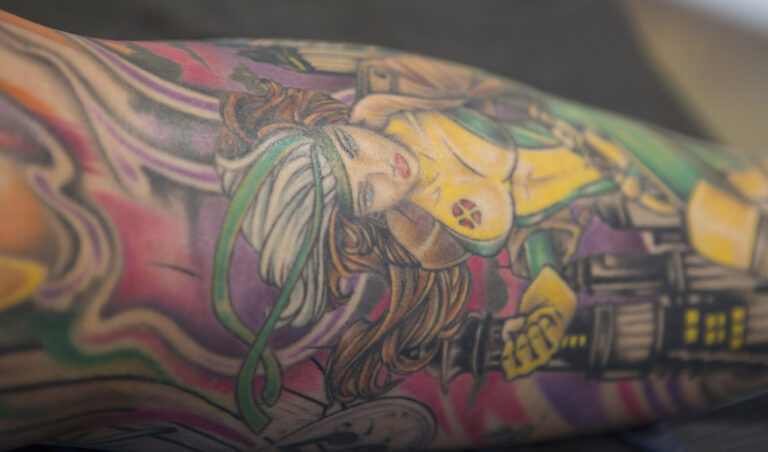Colored Ink Via The Black Rooster
Playing Witness At The Tat Shop


Portion of leg sleeve (Route 66)
Eric Williams Photography

Joshua “Bedo” Escobedo
Eric Williams Photography

Portion of leg sleeve (rogue)
Eric Williams Photography








